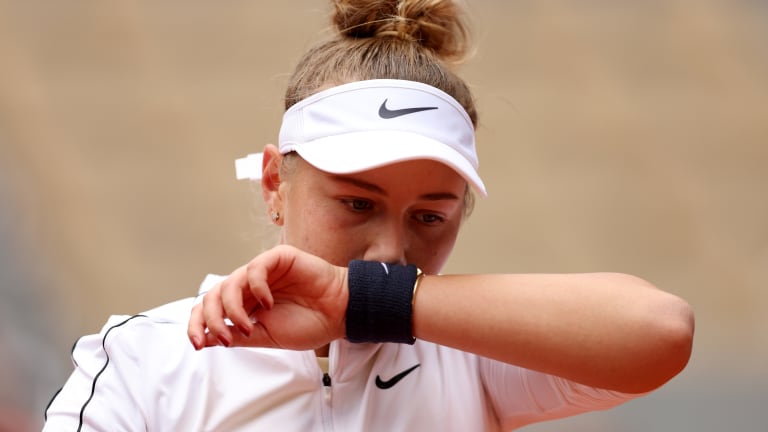Roland Garros
Time management brings Leylah Fernandez to victory over Amanda Anisimova
By May 29, 2022Roland Garros
Was the Carlos Alcaraz-Jannik Sinner Roland Garros match the best ever played?
By Jun 13, 2025Roland Garros
Who were the winners and losers at 2025 Roland Garros?
By Jun 09, 2025Roland Garros
Carlos Alcaraz and Jannik Sinner played the match of the decade, and maybe the century, at Roland Garros
By Jun 09, 2025Roland Garros
PHOTOS: Carlos Alcaraz captivates Chatrier with trademark joy after improbable Roland Garros title defense
By Jun 09, 2025Roland Garros
Carlos Alcaraz saves three match points, tops Jannik Sinner in longest Roland Garros final of Open Era
By Jun 08, 2025Roland Garros
Aryna Sabalenka clarifies controversial Coco Gauff claim: "Can't pretend it was a great day"
By Jun 08, 2025Roland Garros
Coco Gauff counters Aryna Sabalenka's Roland Garros claim by saying she 'wanted' Iga Swiatek in final
By Jun 08, 2025Roland Garros
2025 Roland Garros men's final preview: Carlos Alcaraz vs. Jannik Sinner
By Jun 07, 2025Roland Garros
PHOTOS: Coco Gauff celebrates Roland Garros title with parents, toasts champagne at Tennis Channel set
By Jun 07, 2025Time management brings Leylah Fernandez to victory over Amanda Anisimova
Anisimova and Fernandez have all the makings of what could blossom into a tremendous rivalry, but the telling factor was how each managed time in their fourth-round clash—not just in rallies, but in between points.
Published May 29, 2022
Advertising
Advertising

The negative energy triggered by questioning a call and its subsequent fallout can distract and sabotage the ability to compete effectively, as Anisimova learned in Paris.
© Getty Images
Advertising
![“Every time I step out on the court I still have something to prove,” Fernandez said. “I still have that mindset [that] I'm the underdog."](https://images.tennis.com/image/private/t_16-9_768/f_auto/tenniscom-prd/qistobmkuysz7mzbbonq.jpg)
“Every time I step out on the court I still have something to prove,” Fernandez said. “I still have that mindset [that] I'm the underdog."
© Getty Images
Advertising

Fernandez improved to 2-0 in her head-to-head against Anisimova after Sunday's victory.
© Getty Images